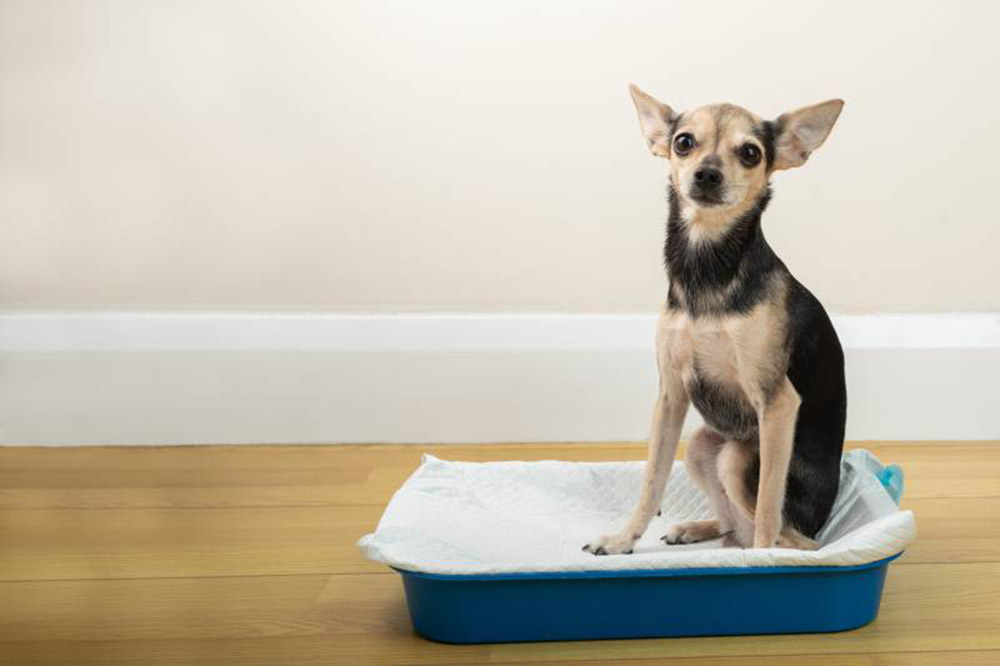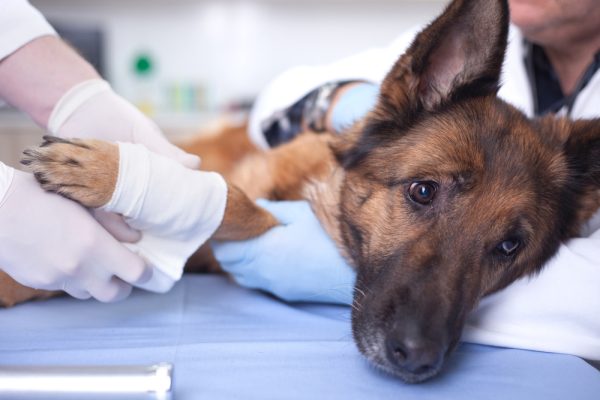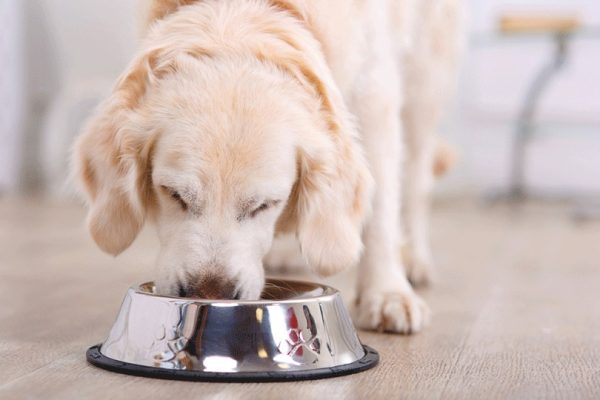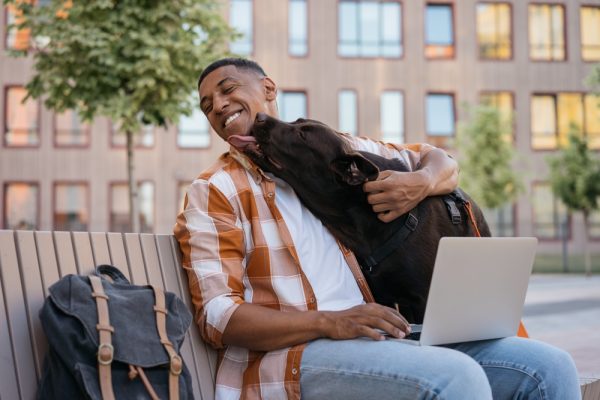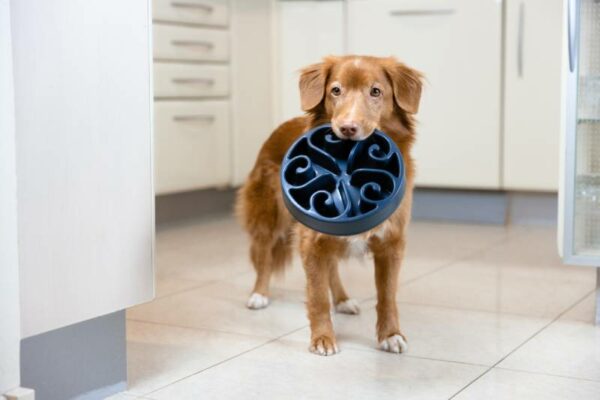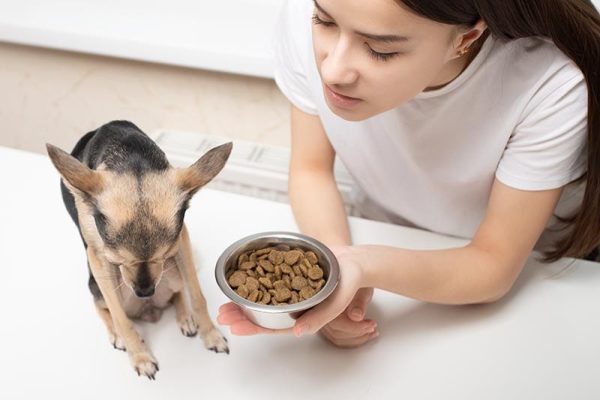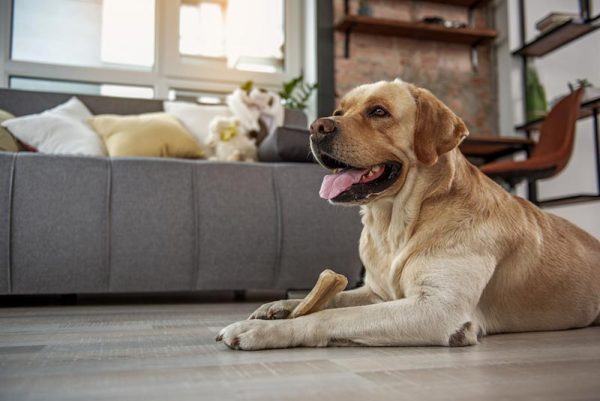While litter boxes are often associated with cats, dogs can also learn how to use litter boxes. However, unlike cats, dogs don’t have instinctual behaviors that cause them to use a litter box naturally. So, they will have to be trained to use one.
Litter box training a dog is similar to training them to use puppy potty pads. With some time and consistency, your dog can learn how to use a litter box. Here is how you can get started.

Before You Start
Litter box training is often recommended for small dogs and toy dog breeds. This is because it is difficult to find litter boxes that are appropriate sizes for larger dogs. Litter boxes often can’t contain the amount of urine produced by large dogs. It’s also likely that splashing will occur, which would defeat the purpose of the litter box.
When shopping for a litter box, look for one that your dog can step into entirely. It’s best to look for one with higher walls, especially if you have a male dog, as this will help prevent splashing.

The 6 Steps on How to Train Your Dog to Use a Litter Box
1. Set Up the Litter Box in an Accessible Spot
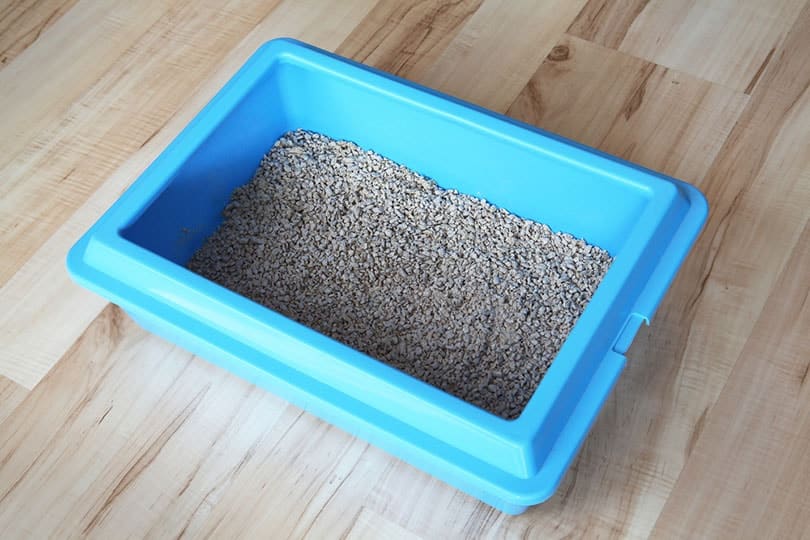
The first thing you want to do is place the litter box in a spot that your dog can easily access. It should also be in an area that they frequent. This will help them to notice the litter box much faster and have an easier time getting to it on their own. The saying, “out of sight, out of mind,” is very true for puppies and dogs. If they don’t see the litter box, they won’t think to use it.
2. Know How Frequently Your Puppy Needs to Pee
Knowing how frequently your puppy needs to pee significantly increases the chances of litter box training success. Puppies can’t hold their bladders for as long as adult dogs can, and their ability to hold it will vary depending on their age and size.
As a general rule of thumb, puppies can hold their urine for the same number of hours as the number of months of their age plus one. For example, a 3-month-old puppy can hold their bladder for up to 4 hours (3 months + 1 additional hour).
Keep in mind that smaller dog breeds have to go more frequently than large dog breeds because they have smaller bladders. So, if your tiny pup is 3 months old, they may have to pee twice in 4 hours instead of just once.
It’s also helpful to take your dog to the litter box as soon as they wake up, right before bedtime, and 20–30 minutes after they’ve eaten or drank water.
3. Place Your Dog in the Litter Box
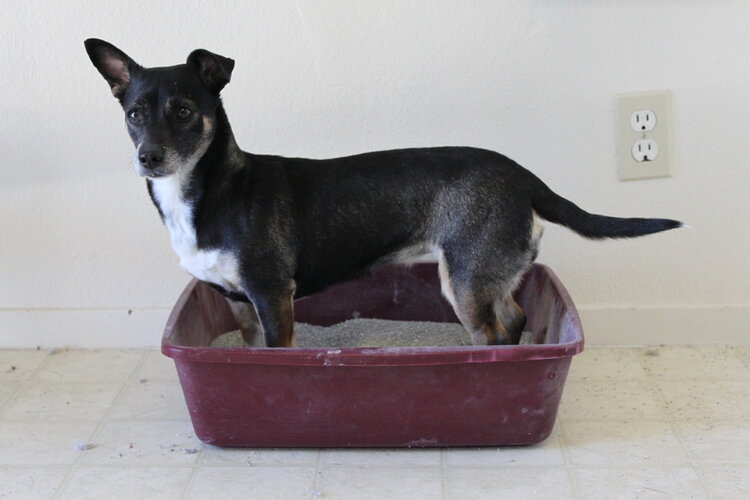
When it’s time for your dog to pee, guide them to the litter box and place them inside. If they try to get out, you can encourage them to go back inside by using their favorite treats.
Remain calm and give your dog some time to relieve themselves. If your dog does relieve themselves, make sure you have a delicious treat on hand to reward them. Once your pup is starting to get the hang of why you are putting them in the litter box, you can start using a command, such as “Go potty,” to help your dog start to link the command with the action.
If your dog doesn’t pee or poop after some time has passed, take them out of the litter box and try again several minutes later. Make sure to keep an eye on your dog and look for signs that they’re about to relieve themselves. They can start sniffing, pacing, circling around, or beginning to squat. Make sure to carry your dog to the litter box if you see them doing any of these motions.
4. Praise and Reward Your Dog
Always reward your dog after they’ve successfully used the litter box. You can give them treats, pets, and encouraging words. Do whatever your dog is most receptive to. With time and consistency, your dog will start to understand that it’s good to relieve themselves in the litter box and will start to go on their own.
5. Clean Up Accidents Immediately and Thoroughly
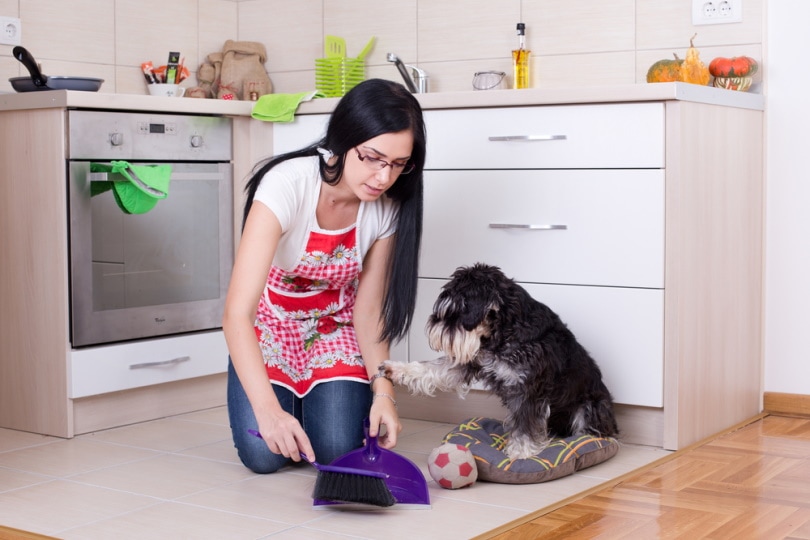
It’s common for accidents to happen throughout potty training, even when you are being vigilant. Never yell at or punish your dog for not making it to the litter box. This will diminish their confidence and will also have a negative impact on your bond and relationship with your dog.
Be quick to clean up accidents as soon as you see them because dogs, especially puppies, will start to develop a habit of peeing and pooping at the same spots. Make sure to use a cleaner that’s specifically designed to clean up pet messes. These cleaners contain components that break down pet urine and eliminate odors to prevent pets from revisiting and urinating in the same spaces.
If you're looking for an all-in-one, pet-friendly, enzyme cleaner, we highly recommend the Hepper Advanced Bio-Enzyme Pet Stain & Odor Eliminator Spray.
It eliminates tough stains and odors easily and is excellent for accident prevention. Plus, it comes with a 100% satisfaction guarantee! Click here to order now. At Dogster, we’ve admired Hepper for many years, and decided to take a controlling ownership interest so that we could benefit from the outstanding products of this cool pet company!
6. Change Litter Box Locations if Needed
Once your dog is using the litter box consistently on their own, you can now change the location of the litter box, if needed. It can be tucked in a more secluded area, but just make sure that it’s still somewhere your dog can access easily. Your dog may need a little guidance and reminders of the new location. However, they’ll eventually be able to find it on their own.

A Note on Urinary Health
If you are having a particularly challenging time with potty training, it doesn’t hurt to consult a veterinarian or a professional dog trainer. In some cases, puppies and adult dogs may have difficulty with potty training due to issues in their urinary tract and may require veterinary care. Some common signs associated with urinary issues include abnormal urination patterns, drinking more water than usual, pain when urinating, and straining to urinate. Seek veterinary care right away if you see blood in your dog’s urine.
If you need to speak with a vet but can't get to one, head over to PangoVet. It's an online service where you can talk to a vet online and get the personalized advice you need for your pet — all at an affordable price!


Conclusion
Litter box training can make life more convenient, especially if you live in a high-rise flat. It works best with smaller dogs that can fit inside a litter box. So, if it seems appropriate, it doesn’t hurt to start training your dog to use a litter box. It will take some time and patience. However, with consistency, most dogs can be trained to use a litter box successfully.
Featured Image Credit: Tikhonova Yana, Shutterstock
